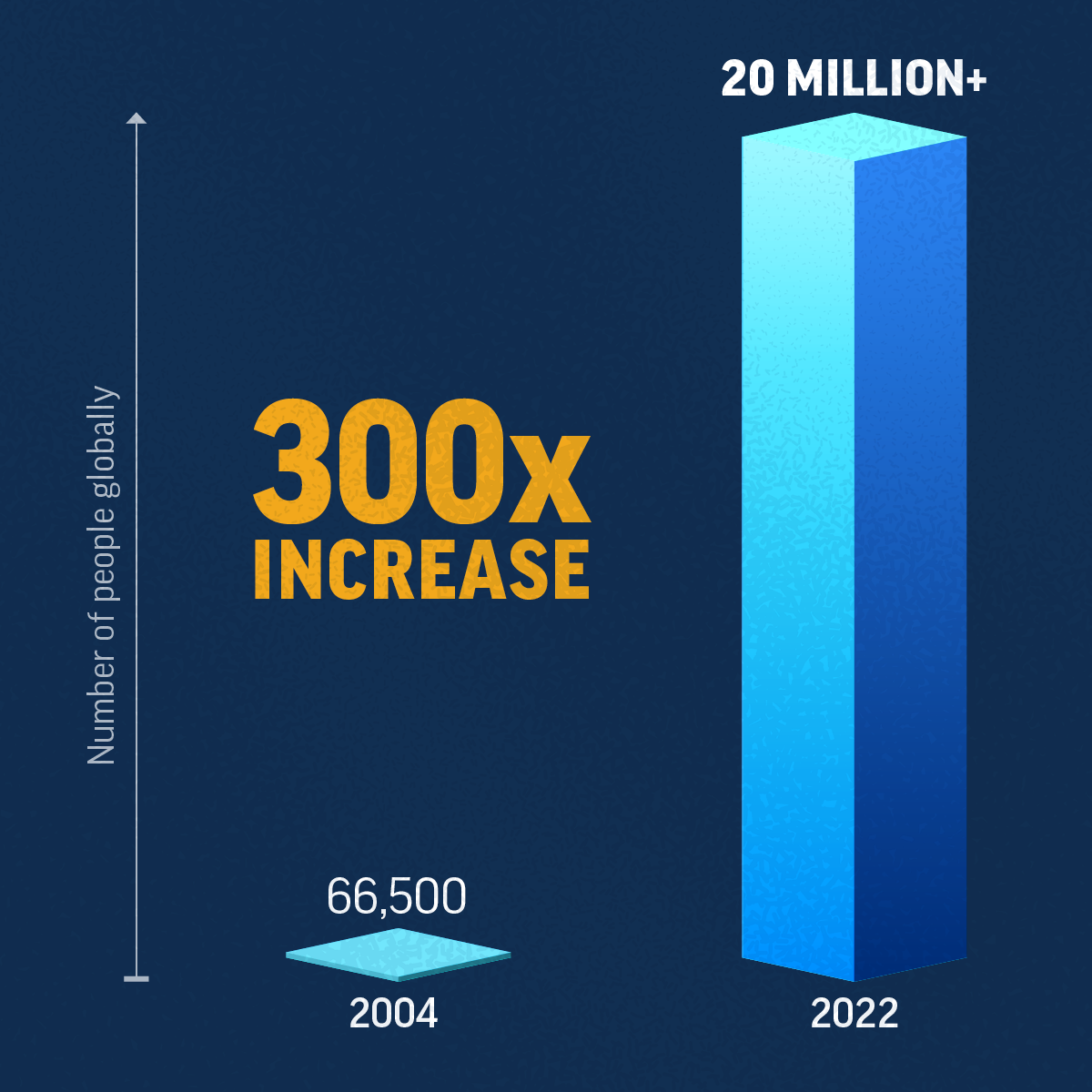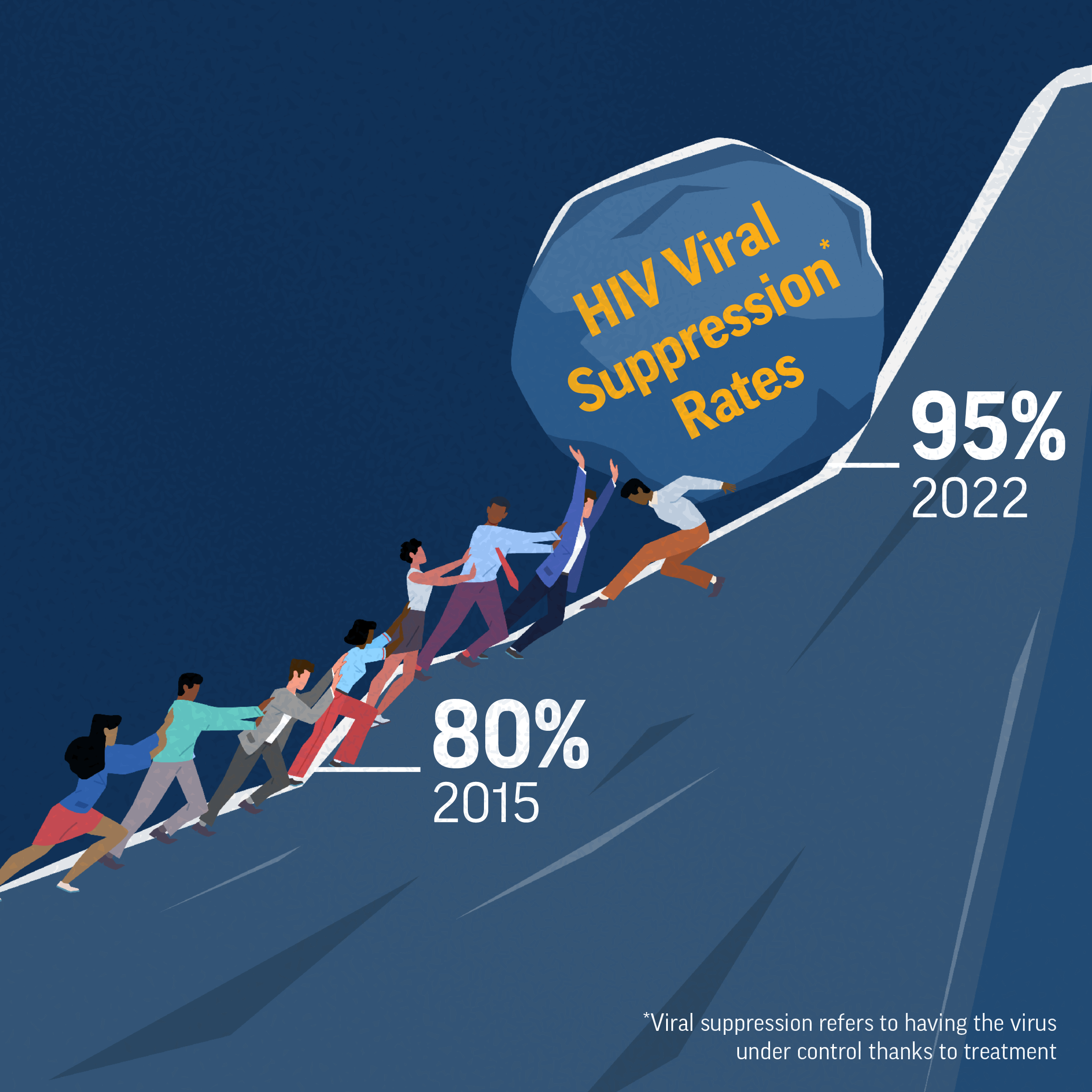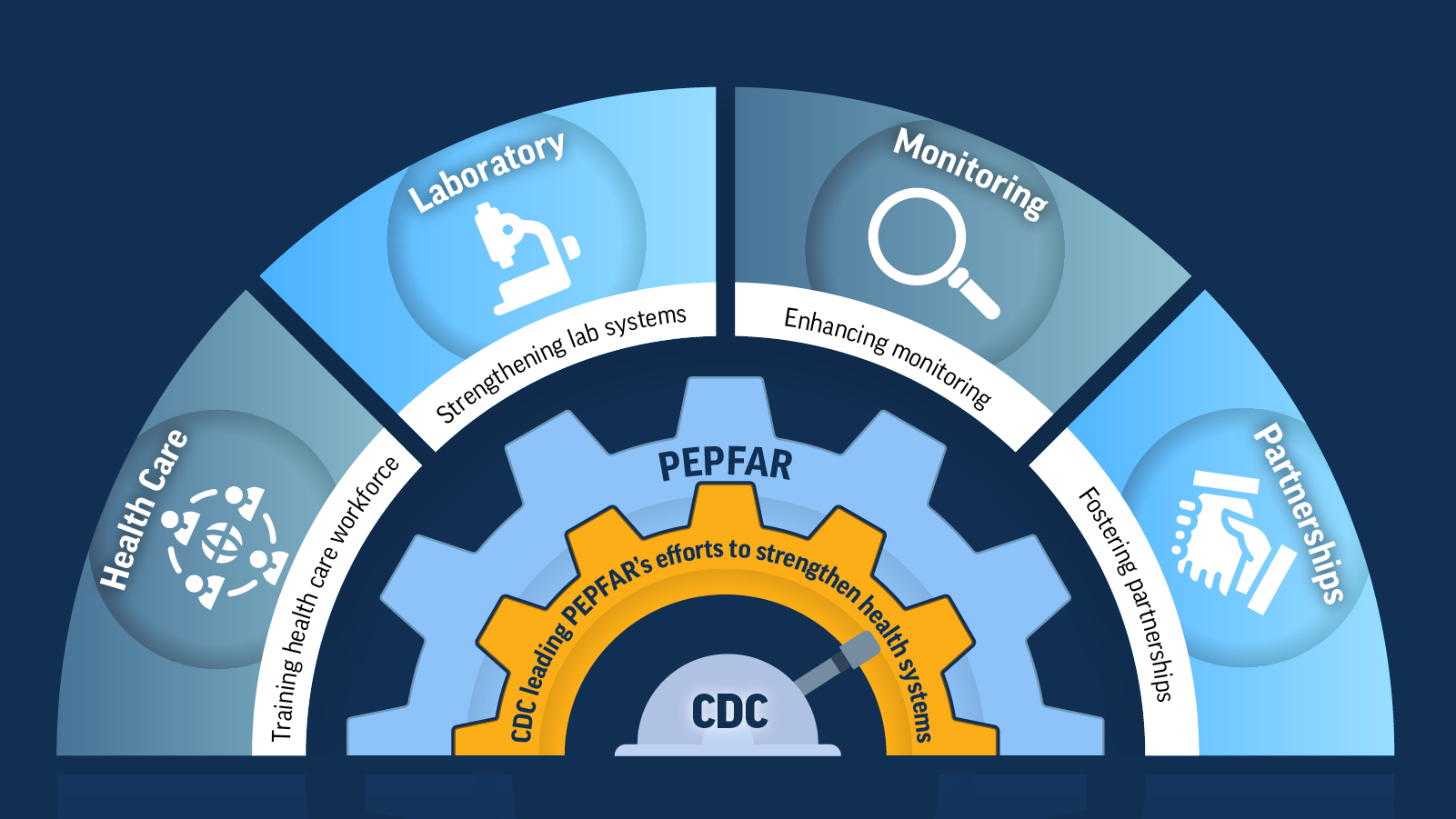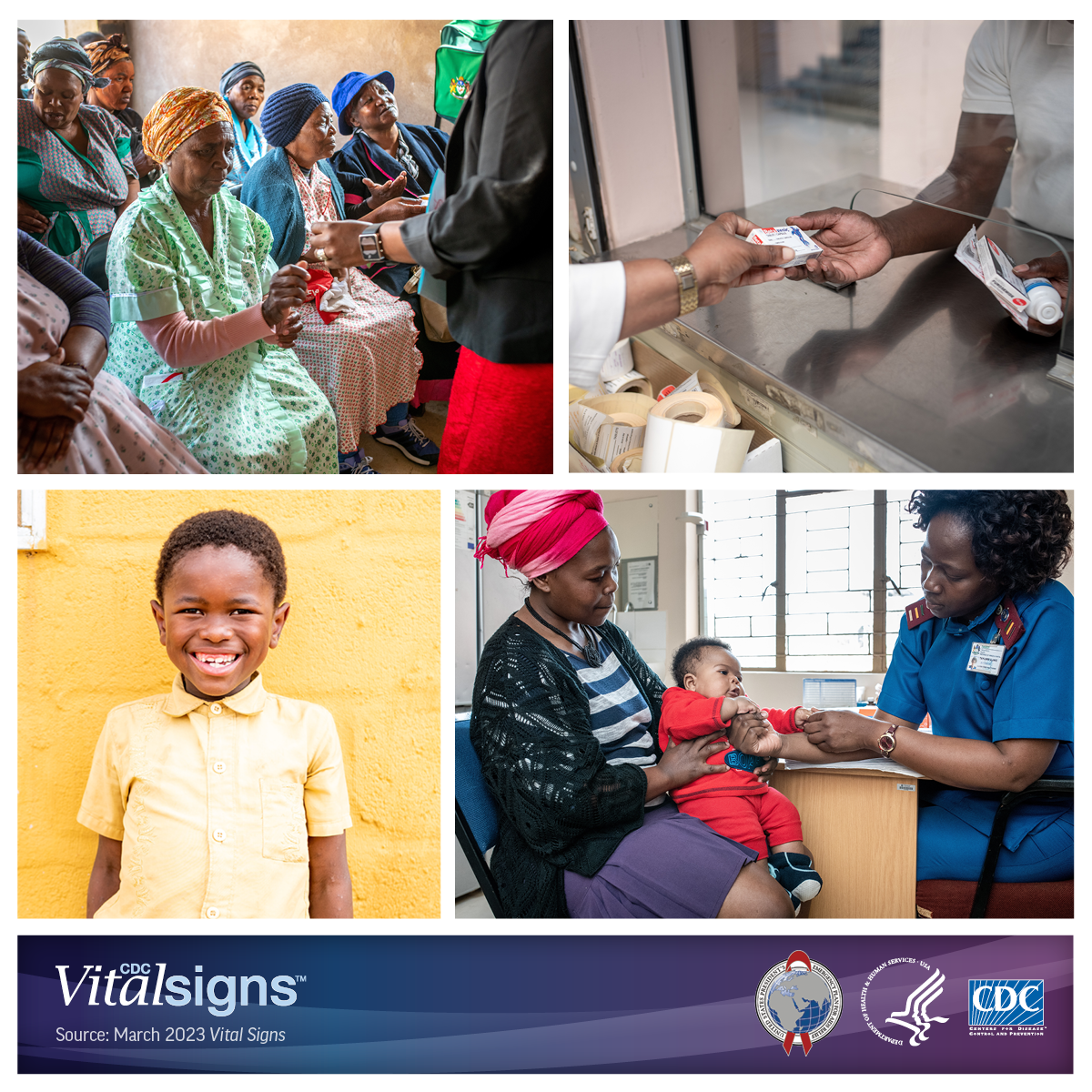*Virally suppressed refers to people who, thanks to treatment, have their virus under control. This can prevent transmission of HIV to sexual partners and helps reduce the risk of transmission from mothers to children.
†Antiretroviral therapy (ART) is treatment for HIV.
Gaps remain: Despite tremendous achievements over the past 20 years, significant gaps remain.
Continued inequities: Today, people from certain groups, including youth, men, and several key populations, have been and continue to be left behind because of health inequities.
- The report shows that while viral load suppression rates have reached 95% overall, certain groups—including individuals who are pregnant and breastfeeding, children, adolescents, and people living in prisons—have yet to achieve comparable rates.
- The data also show population viral load suppression rates were lower in men when compared to women and lower in younger people when compared to older people.
More than 20 Million People Have Received HIV Treatment through PEPFAR
The number of people on lifesaving HIV treatment through PEPFAR increased 300 times since 2004.
Sustaining PEPFAR’s Global Gains in HIV Treatment Requires Tremendous Effort
The percent of people with HIV on PEPFAR-supported treatment who were virally suppressed rose from 80% in 2015 to 95% in 2022.
CDC Is at the Forefront of Strengthening Health Systems Globally
PEPFAR’s HIV efforts are strengthening health systems around the world, which helps countries confront other health threats and protects Americans at home and abroad. CDC plays a critical role.
Continue to build on 20 years of achievements
- We’ve come a long way in the fight against HIV. Twenty years ago, when PEPFAR was launched, an HIV diagnosis in many countries almost certainly meant death and, globally, communities were being devastated by HIV.
- When PEPFAR began, only 50,000 people in Africa were on HIV treatment. Today, more than 20 million men, women, and children are on PEPFAR-supported treatment. PEPFAR investments are managing a chronic disease at an unprecedented scale. By providing effective treatment, these investments are helping to drive down new HIV infections and deaths—putting the world on the path to eliminate HIV as a global public health threat by 2030.
Leverage lessons learned from PEPFAR’s successes
- A few examples of PEPFAR’s impact in partner countries include:
- In Uganda, one of the first countries supported by PEPFAR, efforts to expand lifesaving HIV treatment have prevented over 600,000 deaths related to HIV and nearly half a million HIV infections since 2004.
- In just five years (from 2011–2016), Eswatini’s rate of new HIV infections was cut nearly in half and its national rate of HIV viral load suppression was doubled.
- In Nigeria, the number of people newly diagnosed with HIV who began HIV treatment increased eightfold in just 18 months—even in the midst of the COVID-19 pandemic.
Sustain impact
- Despite these tremendous achievements, the fight against HIV is far from over. At the end of 2021, almost 15% of people living with HIV did not know their HIV status. Nearly 10 million people with HIV were not accessing lifesaving treatment and 1.5 million people had newly acquired an HIV infection.
- Eliminating HIV as a global public health threat is within our grasp. To achieve this goal by 2030, as outlined by PEPFAR’s new five-year strategy, we must stay the course and build on our progress to date. As a global health community, we must:
- Sustain HIV efforts and investments: Continue to be unrelenting in our efforts to build on these achievements or risk reversing decades of progress. Invest in patient-centered, data-driven programs, and expand the innovations and tools that are proven to effectively drive down new HIV infections and deaths.
- Advance health equity: Address health inequities head on. Build on our existing work to strengthen efforts to reach populations that continue to be left behind. Address the disparities that prevent too many from accessing lifesaving HIV treatment and prevention services.
- Strengthen health systems: Continue to bolster and use PEPFAR platforms to strengthen global health security. PEPFAR has worked to strengthen public health systems—from improving laboratories and disease monitoring systems to training healthcare workers—in countries around the globe. These efforts have proved vital in responding to other public health threats, such as COVID-19. PEPFAR’s investments in strengthening these health systems will help to confront future health threats—and protect the health of Americans at home and around the world.
- Build transformative partnerships: Collaborate and harness our shared commitment to bring an end to the global HIV epidemic.
It will take collective effort—governments, policy makers, and public health advocates, communities and patients, public health and private enterprise—working together to continue the momentum. By doing so, we can eliminate HIV as a global health threat, continue to save lives, and strengthen the public health systems that make the world a safer place.
Get email updates about Vital Signs
VITAL SIGNS RESOURCES








